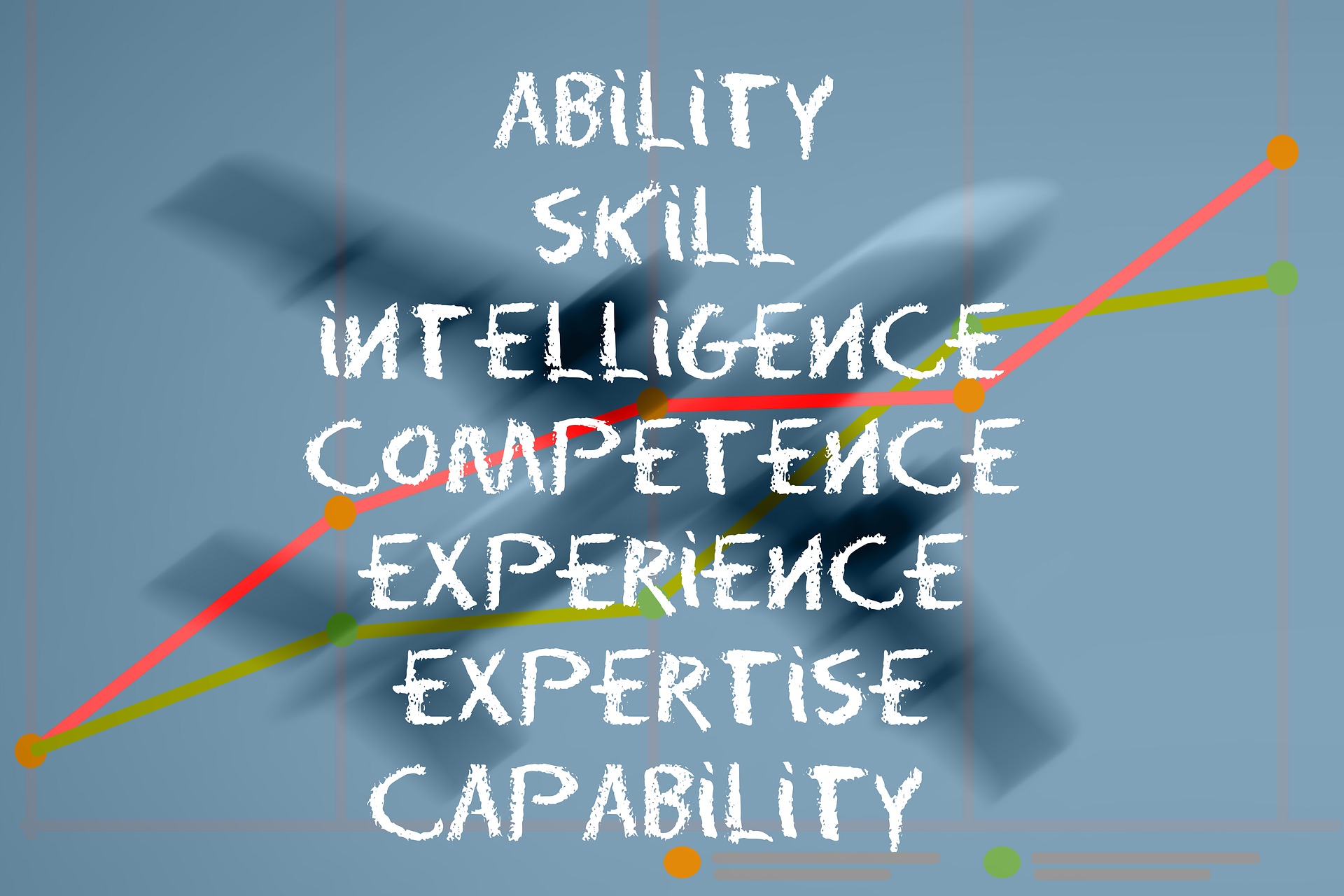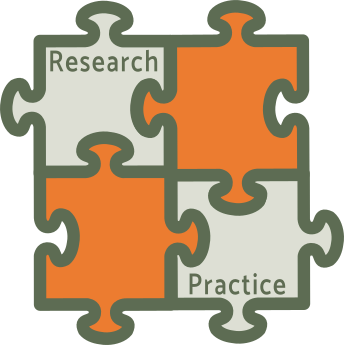Business – IT alignment
What is Business – IT alignment?
Business-IT alignment concerns the fit between information technology and the business strategy, structure, mission, and goals of an organization. Besides fit, researchers have used many terms to express and describe the many points of contact between business and IT, including harmony, integration, fusion, and linkage [1,2]. Common for these terms, is the idea that organizational performance can be improved by coordinating activities across IT and non-IT domains within organizations in ways that are likely to provide new services and improve business processes and decision making [3]. In addition to alignment between IT and business strategies, researchers have also investigated alignment between business and IT plans, processes, and shared knowledge and understanding between business and IT managers as to the role of IT in the organization [1,4].
Why is Business – IT alignment important?
Extensive research has garnered significant evidence regarding the positive impact of business-IT alignment on organizational performance [3]. A recent review of the literature [1] points to examples like increased sales revenue, improved operational efficiency, cost reduction, and enhanced customer value, as well as intermediate performance variables like organizational agility.
Both practitioners and scholars have considered alignment a top organizational concern and management priority for several decades – surveys on IT management have consistently ranked the lack of alignment as one of the top organizational challenges [3] (see Society for Information Management – IT trends study). The large body of research on the topic can in this regard be an important source for practical guidance on how managers can improve business-IT alignment.
Practical advice
A summary of advice based on a selection of research articles is given below (with references and links to internal article reviews where available):
IT assets/infrastructure management
- Organizations should focus on developing flexible technology assets and IT infrastructure (e.g. use of reusable components and modules that can be applied in multiple applications and enable rapid adjustments of infrastructure). This may enhance both the operational support and strategic decision support of IT [5]. They should also evaluate and apply emerging technologies, and initiate activities that drive business process change and deliver customized solutions to business units [3].
- The IT unit should emphasize development of IT infrastructure that corresponds with business processes. This may improve organizations’ abilities to rapidly sense and react to external changes [6]. In order to achieve alignment between formal business and IT structures, organizations should focus on [7]:
- the fit between IT governance (IT management design) and organizational structure
- mutual correspondence between IT architecture (applications, databases, hardware, etc.) and organizational structure
- the fit between IT architecture and IT plan
- mutual correspondence between business processes (workflow and processes) and IT process (IS development process, data center operations, etc.).
- Organizations seeking to increase the match between the content of the business strategy and the content of the IS strategy, should focus on the decision-making structure of IT development prioritization (including securing top management involvement), formal processes related to ensuring consistency between IT policies and business needs, and communication and dissemination of IT governance principles [8].
- Formal processes concerning IT decisions and allocation of IT resources at strategic, tactical, and operational levels should be established [3].
- Information systems in organizations can improve the efficiency of day-to-day business operations, support effective coordination across functions and product lines, and enable the users to perform detailed analyses of present business situations. To achieve this, organizations should seek to adjust existing IT applications on a regular basis and frequently refine the provision of existing IT applications. They should also ensure that IT supports demands that go beyond existing needs, plan for extension of IT applications, and regularly search for new IT applications in business operations [5].
- Although many studies find positive effects of formal alignment between business and IT (i.e. interrelated IT and business strategies), organizations should be aware that this can also contribute to inertia. Efforts to prevent inertia should therefore be taken when organizations seek to enhance alignment between business and IT strategies and plans. This may be achieved by using social alignment mechanisms (many of which are presented below) in parallel with formal alignment [9].
Interaction between business and IT
- Organizations should facilitate communication between IT functions and business units, including exchange of ideas, knowledge, and information between IT and business units that enable them to understand the respective strategies, plans, business and IT environments, risks, and priorities [3].
- The extent and quality of collaboration across units is central for social alignment, and organizations should therefore ensure [10]:
- that changes in information systems are implemented in close cooperation between business units and the IT/IS unit.
- a high level of cross-group teamwork
- frequent communication and consultation between the business units and the IT/IS unit. It is in this regard important that the interaction between the units focuses on mutual knowledge sharing and development of trust, as this may improve business/IT understanding and flexibility.
- that the different groups have great confidence, mutual respect and trust in each other, as well as perceptions of shared benefits of cooperation. In this regard, organizations could build competence and understanding of the value of IT by using metrics to measure and demonstrate the contributions of IT to the business in ways that all parts understand and accept [3].
Related to the need for interaction between business and IT, several studies underscore the importance of competence development:
- Abilities to rapidly sense and react to external changes can be improved by combining structural and social alignment mechanisms. To achieve this, organizations should emphasize improvement of the IT competence of business employees and business competence of IT employees, as well as collaboration between employees in the IT department and employees in business units [6].
- Organizations should focus on developing IT skills by human resource activities like hiring, retention, training, performance feedback, innovation encouragement, career opportunities, and individual skill development. They should also emphasize activities that promote the IT organization’s readiness for change, learning, and ability to leverage new ideas [3].
- In addition to promoting interaction between IT staff and users, organizations should seek to increase IT staff’s understanding of business situations (e.g. the primary operations and challenges the organization faces), as this may enhance both the operational support and strategic decision support of IT [5].
- In order to increase cross-domain knowledge building, organizations should ensure that business employees have knowledge of [11]:
- different technologies, software applications, system development methods and project management practices applied in their organization
- vision, goal setting, resource allocation, and performance monitoring regarding IT in their organization.
- where to acquire additional information regarding the information systems or IT practices applied in their organization.
- In parallel, organizations should seek to develop the business competencies of IT professionals. This involves their abilities to [12]:
- learn about and increase their knowledge of business functions.
- interpret business problems and develop appropriate technical solutions.
- understand the business environment.
References / sources
- Strategic IT alignment: twenty-five years on.
Coltman, T., Tallon, P.P., Sharma, R. & Queiroz, M. (2015). Journal of Information Technology, 30(2). - A process-oriented perspective on the alignment of information technology and business strategy.
Tallon, P.P. (2014). Journal of Management Information Systems, 24(3). - Enhancing the measurement of information technology (IT) business alignment and its influence on company performance.
Luftman, J., Lyytinen, K. & Zvi, T.b. (2017). Journal of Information Technology, 32(1). - Antecedents of IS strategic alignment: A nomological network.
Preston, D.S. & Karahanna, E. (2008). Information Systems Research, 20(2). - A study of IS assets, IS ambidexterity, and IS alignment: The dynamic managerial capability perspective.
Tai, J.C.F., Wang, E.T.G. & Yeh, H-Y. (2019). Information & Management, 56(1). - Understanding employee competence, operational IS alignment, and organizational agility – An ambidexterity perspective.
Zhou, J., Bi, G., Liu, H., Fang, Y. & Hua, Z. (2018). Information & Management, 55(6). - Developing a socio-technical framework for business-IT alignment.
Lee, S.M., Kim, K., Paulson, P. & Park, H. (2008). Industrial Management & Data Systems, 108(9). - How information technology governance mechanisms and strategic alignment influence organizational performance: Insights from a matched survey of business and IT managers.
Wu, S.P-J., Straub, D.W. & Liang, T-P. (2015). Management Information Systems Quarterly, 39(2) - Unraveling the alignment paradox: How does business—IT alignment shape organizational agility?
Liang, H., Wang, N., Xue, Y. & Ge, S. (2017). Information Systems Research, 28(4). - How social capital among information technology and business units drives operational alignment and IT business value.
Wagner, H-T., Beimborn, D. & Weitzel, T. (2014). Journal of Management Information Systems, 31(1). - Leveraging the IT competence of non-IS workers: social exchange and the good corporate citizen.
Davis, J.M. (2013). European Journal of Information Systems, 22(4). - Critical skills and knowledge requirements of IS professionals: A joint academic/industry investigation.
Lee, D.M.S., Trauth, E.M. & Farwell, D. (1995). Management Information Systems Quarterly, 19(3).
Other external resources for practitioners
Business alignment: News, how-tos, features, reviews and videos at CIO.com
Lecture: Getting value from IT (the topics covered are “IT strategic alignment”, “IT leadership” and “IT governance”) by Professor Tim Kayworth.
Article reviews related to Business – IT alignment
How to improve firm performance using big data analytics capability and business strategy alignment?
Shahriar Akter.
Samuel Fosso Wamba.
Angappa Gunasekaran.
Rameshwar Dubey.
Stephen J. Childe.
(2016),
International Journal of Production Economics
, 182
, 113-131.
IT competence Business – IT alignment Data & Business analytics
How to improve firm performance using big data analytics capability and business strategy alignment?
Shahriar Akter.
Samuel Fosso Wamba.
Angappa Gunasekaran.
Rameshwar Dubey.
Stephen J. Childe.
(2016),
International Journal of Production Economics
, 182
, 113-131.
IT competence Business – IT alignment Data & Business analytics
e-Leadership through strategic alignment: An empirical study of small- and medium-sized enterprises in the digital age
Weizi Li.
Kecheng Liu.
Maksim Belitski.
Abby Ghobadian.
Nicholas O'Regan.
(2016),
Journal of Information Technology
, 31
(2) , 185-206.
Organizational agility Business – IT alignment Digital leadership
e-Leadership through strategic alignment: An empirical study of small- and medium-sized enterprises in the digital age
Weizi Li.
Kecheng Liu.
Maksim Belitski.
Abby Ghobadian.
Nicholas O'Regan.
(2016),
Journal of Information Technology
, 31
(2) , 185-206.
Organizational agility Business – IT alignment Digital leadership
Discriminating IT Governance
Amrit Tiwana.
Stephen K. Kim.
(2015),
Information Systems Research
, 26
(4) , 637-874.
IT competence Business – IT alignment
Discriminating IT Governance
Amrit Tiwana.
Stephen K. Kim.
(2015),
Information Systems Research
, 26
(4) , 637-874.
IT competence Business – IT alignment
Aligning with new digital strategy: A dynamic capabilities approach
Adrian Yeow.
Christina Soh.
Rina Hansen.
(2018),
Journal of Strategic Information Systems
, 27
(1) , 43-58.
Information systems strategy Digital transformation Business – IT alignment
Aligning with new digital strategy: A dynamic capabilities approach
Adrian Yeow.
Christina Soh.
Rina Hansen.
(2018),
Journal of Strategic Information Systems
, 27
(1) , 43-58.
Information systems strategy Digital transformation Business – IT alignment
Information systems use as strategy practice: A multi-dimensional view of strategic information system implementation and use
Viktor Arvidsson.
Jonny Holmström.
Kalle Lyytinen.
(2014),
Journal of Strategic Information Systems
, 23
(1) , 45-61.
Information systems strategy Business – IT alignment
Information systems use as strategy practice: A multi-dimensional view of strategic information system implementation and use
Viktor Arvidsson.
Jonny Holmström.
Kalle Lyytinen.
(2014),
Journal of Strategic Information Systems
, 23
(1) , 45-61.
Information systems strategy Business – IT alignment
A study of IS assets, IS ambidexterity, and IS alignment: The dynamic managerial capability perspective
Jeffrey C.F. Tai.
Eric T.G. Wang.
Hsi-Yin Yeh.
(2019),
Information & Management
, 56
(1) , 55-69.
Information systems strategy IT competence Business – IT alignment
A study of IS assets, IS ambidexterity, and IS alignment: The dynamic managerial capability perspective
Jeffrey C.F. Tai.
Eric T.G. Wang.
Hsi-Yin Yeh.
(2019),
Information & Management
, 56
(1) , 55-69.
Information systems strategy IT competence Business – IT alignment
How information technology governance mechanisms and strategic alignment influence organizational performance: Insights from a matched survey of business and IT managers
Shelly Ping-Ju Wu.
Detmar W. Straub.
Ting-Peng Liang.
(2015),
Management Information Systems Quarterly
, 39
(2) , 497-518.
Information systems strategy Business – IT alignment Digital leadership
How information technology governance mechanisms and strategic alignment influence organizational performance: Insights from a matched survey of business and IT managers
Shelly Ping-Ju Wu.
Detmar W. Straub.
Ting-Peng Liang.
(2015),
Management Information Systems Quarterly
, 39
(2) , 497-518.
Information systems strategy Business – IT alignment Digital leadership
Enhancing the measurement of information technology (IT) business alignment and its influence on company performance
Jerry Luftman.
Kalle Lyytinen.
Tal ben Zvi.
(2017),
Journal of Information Technology
, 32
(1) , 26–46.
Information systems strategy Business – IT alignment
Enhancing the measurement of information technology (IT) business alignment and its influence on company performance
Jerry Luftman.
Kalle Lyytinen.
Tal ben Zvi.
(2017),
Journal of Information Technology
, 32
(1) , 26–46.
Information systems strategy Business – IT alignment
Understanding employee competence, operational IS alignment, and organizational agility - an ambidexterity perspective
Zhou, Jingmei.
Bi, Gongbing.
Liu, Hefu.
Fang, Yulin.
Hua, Zhongsheng.
(2018),
Information & Management
, 55
(6) , 695-708.
Organizational agility IT competence Information systems strategy Business – IT alignment
Understanding employee competence, operational IS alignment, and organizational agility - an ambidexterity perspective
Zhou, Jingmei.
Bi, Gongbing.
Liu, Hefu.
Fang, Yulin.
Hua, Zhongsheng.
(2018),
Information & Management
, 55
(6) , 695-708.
Organizational agility IT competence Information systems strategy Business – IT alignment
Unraveling the alignment paradox: How does business-IT alignment shape organizational agility?
Huigang Liang.
Nianxin Wang.
Yajiong Xue.
Shilun Ge.
(2017),
Information Systems Research
, 28
(4) , 863-879.
Information systems strategy IT competence Organizational agility Business – IT alignment
Unraveling the alignment paradox: How does business-IT alignment shape organizational agility?
Huigang Liang.
Nianxin Wang.
Yajiong Xue.
Shilun Ge.
(2017),
Information Systems Research
, 28
(4) , 863-879.
Information systems strategy IT competence Organizational agility Business – IT alignment
Topics


